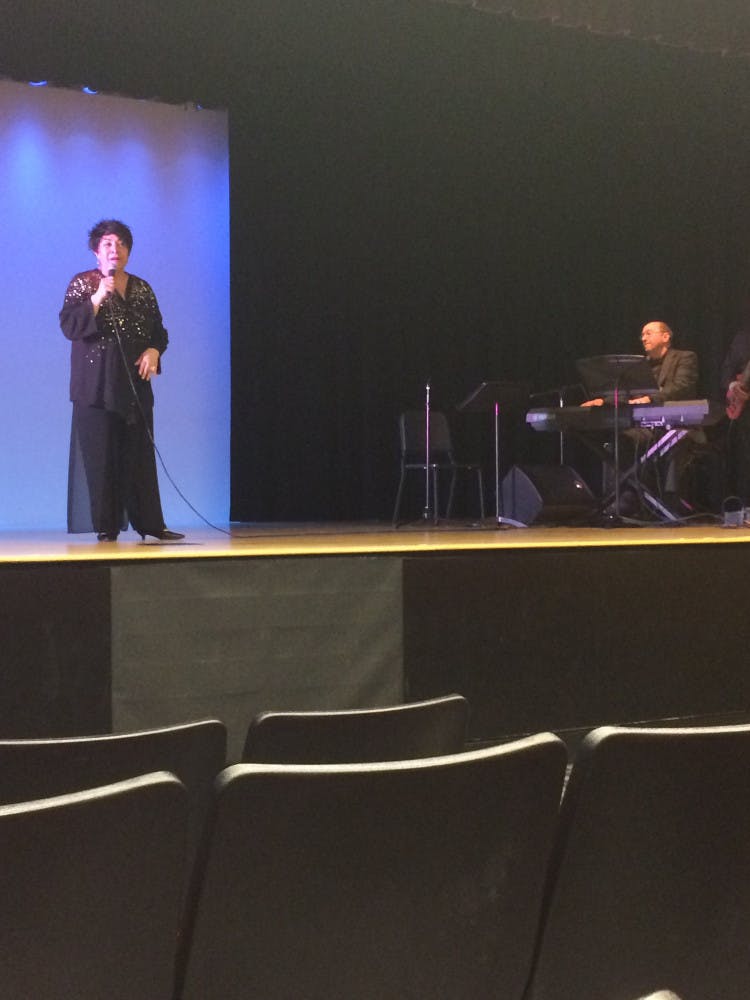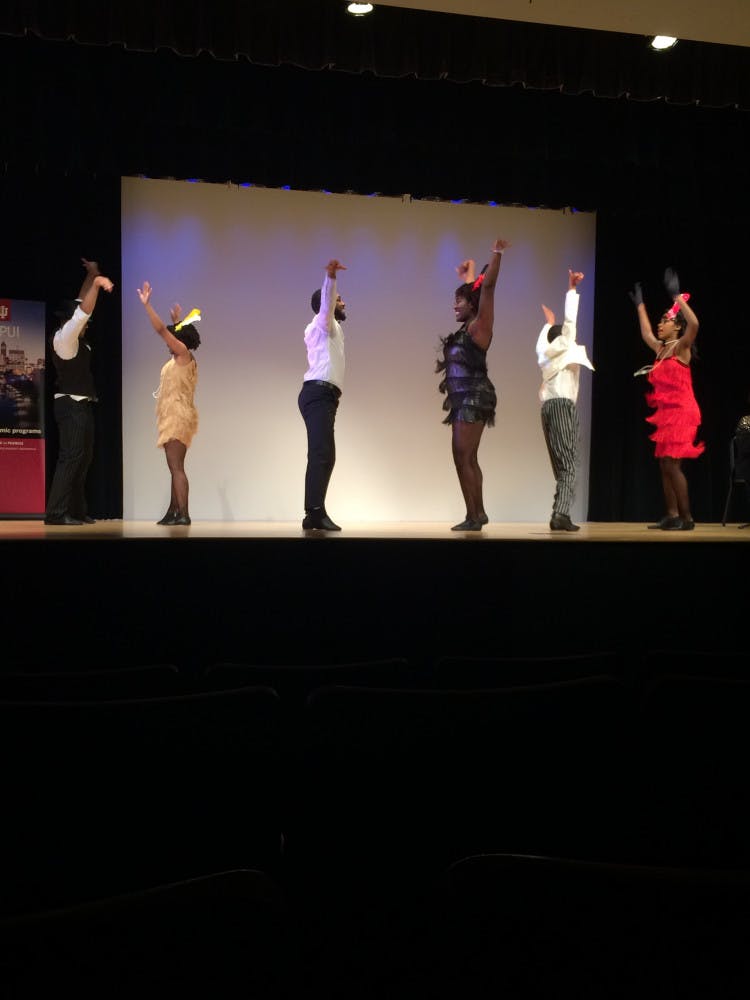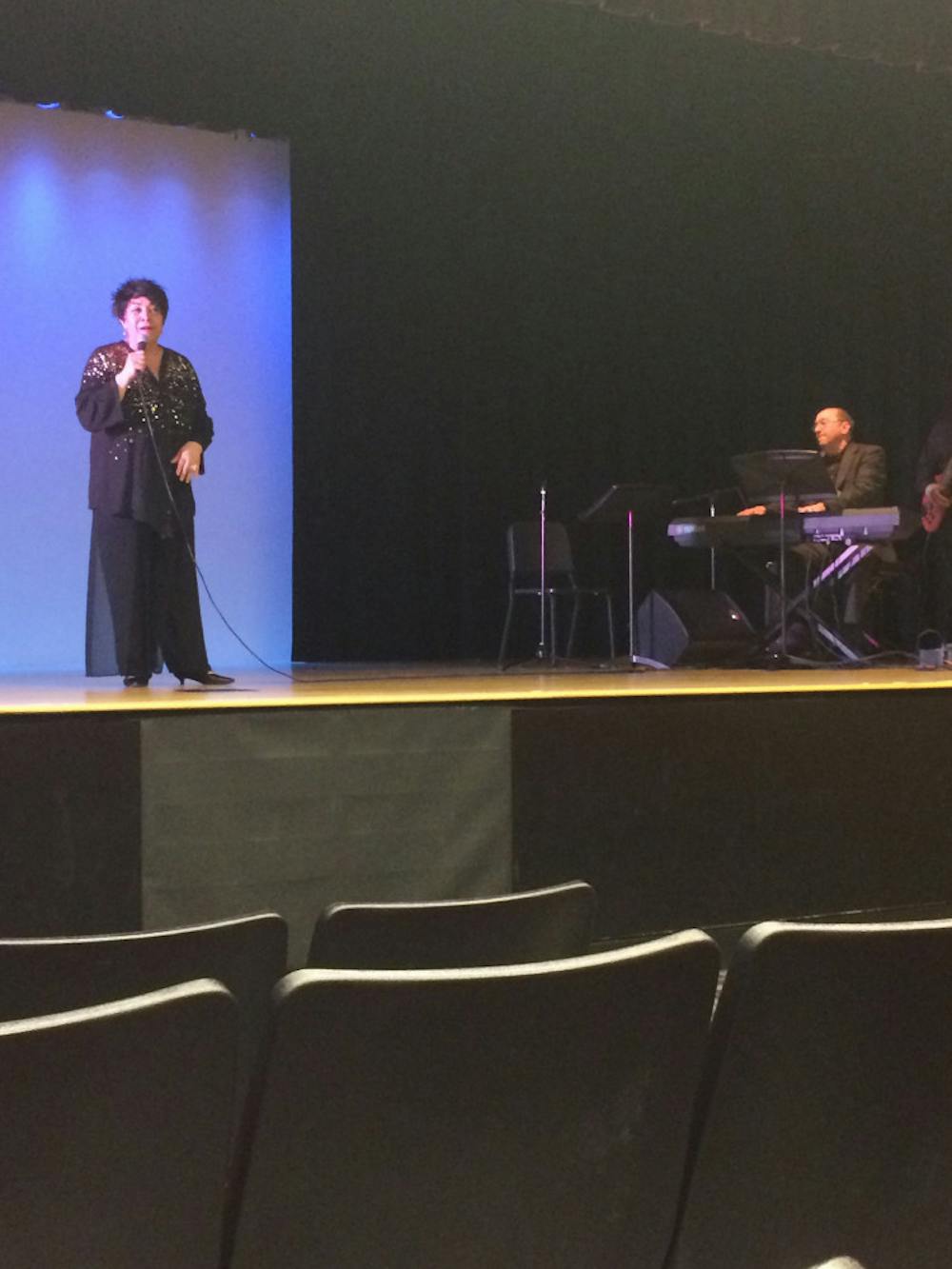“The Price of Progress: The IUPUI/Indiana Avenue Story” play existed for the explicit purpose of starting a dialogue about the relationship IUPUI has with the history of the neighborhood it displaced. Part of the 50 year anniversary, this play prompted interesting questions as to how the university interacts with this legacy and those directly affected by it, but I thought it could’ve challenge institutional power, too.
The play lasted for more than two hours and featured dramatizations and videos of IUPUI and Indiana Avenue’s past, plus live jazz and dancing. The band, The Jazzmen featuring vocalist Sandi Lomax, was fantastic.

I found the acting quite charming and enjoyed the sense of humor the characters embodied. They were archetypical, but the play was more about events and facts than any one person, so it worked. The dancers were young and lively, and their talent shone brighter as the styles became more contemporary.
The characters reflected on the past while at a 50th anniversary gala. The portion which focused on Indiana Avenue cel
ebrated how African-Americans in Indianapolis created a hotspot for music and culture. The second act focused on IUPUI’s many milestones and achievements.
The scene which marked the transition from Indiana Avenue to IUPUI’s was the night of Dr. Martin Luther King Jr.’s assassination. The performance was a moving call that change will come, even as things appear to fall apart.
This play was partly inspired by the work of Dr. Paul Mullins and the late Glenn White. My second major is anthropology, and I’ve taken multiple classes with Mullins. I’ve heard the story of IUPUI’s displacement of west side locals at least four times.

I mention this because, based on that work, my understanding is that near west side neighborhoods did not wane solely because of desegregation and wealthier families leaving for other parts of town, as asserted in the play. IUPUI did not replace an inevitably failing slice of real estate.
Federally-funded urban displacement swept the nation after WWII. The university bought the land beneath houses where campus stands today. One by one, IUPUI plowed and paved until there simply weren’t enough people to sustain a neighborhood. It was perfectly legal and painfully slow.
As stated early in the play, this damage has been done. Can’t go back. And IUPUI has made serious achievements, as I learned through song and celebration. But I worry that at its core, the price for this progress is yet to be reckoned with. IUPUI continues to expand north into Ransom Place for student house.
As a conclusion to the play, a character read aloud an additional message from Mullins. I immediately recognized it as his words, not just because nobody else ever writes like that, but because his open call for the university to readily acknowledge the population displacement rang so clear.
This play was created to inform, entertain, and inspire its audience. In that, it succeeded. This is my response to the call for dialogue. My answer is that once the damage is done, what matters is taking responsibility, no matter the shape it takes. And in 50 years, that’s yet to come.
Review: The Price of Progress

Heads up! This article was imported from a previous version of The Campus Citizen. If you notice any issues, please let us know.




